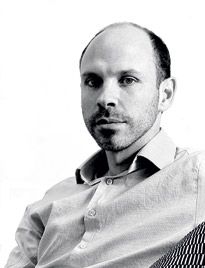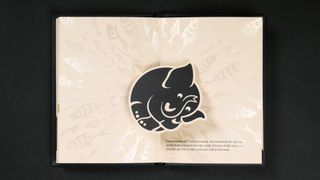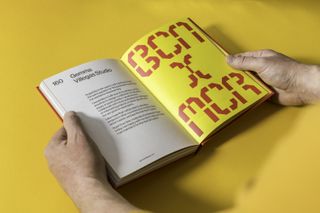Peter Merholz
Peter Merholz, founding partner and president of Adaptive Path, gives Oliver Lindberg an insight into how the agency works, how to develop an experience strategy and how user experience can change an organisation’s structure
Founded in 2001 as one of the first consultancies focused on user experience, Adaptive Path’s work is revered across the world. The firm consists of some of the most talented people in the field. Co-founder Jesse James Garrett coined the term ‘Ajax’, his founding partner Peter Merholz the term ‘blog’. Adaptive Path’s workshops and very own conference, UX Week, are immensely popular.
It’s no surprise, therefore, that the firm has just crossed the 50-employee threshold and opened its first European office in Amsterdam. It helps, of course, that companies are finally starting to recognise that user experience brings a distinct new value to their products.
“Companies are really taking to heart what it is that their customers want to do and figuring out how to deliver that,” says Peter Merholz, Adaptive Path’s founding partner and president. “A good user experience is allowing companies to surpass their competitors – just look at Apple and Southwest Airlines. Now others are wanting to do it themselves because they realise they’re falling back.”

As part of its services, Adaptive Path provides an “experience strategy”. It defines the desired experience early on and, to be able to do so, understanding the customer is crucial. Before any design is done, Adaptive Path conducts a lot of user research, including early field research and ethnographic studies. It’s something that’s becoming more widespread within the design and user experience practice.
“You might have an idea for a product or service but, before you start committing to any path, go out and talk to people. Engage with them!” Merholz suggests. “It’s really important for us to watch people actually engaging in their behaviour. We had a project with a retail client, for example, and we went on so-called shop-alongs, following people as they went around buying a new TV. What’s it like talking to the salesperson? Are there kiosks or displays? What is that experience like?
“You need to be in that flow of actual use and behaviour rather than trying to mimic or mindmap, which always ends up feeling fake. Also, being comfortable researching with groups is increasingly important. There are new interaction paradigms with things such as the Wii. Multiple people are doing stuff at the same time, so your research methodology needs to be able to accommodate more than one person. You can’t talk to one person if what you’re designing is inherently social.”
Mobile is posing significant challenges for user experience. First of all, designers need to really embrace mobile for what it is, and not simply think it’s a smaller version of a PC. But designing for mobility, freeing ourselves from the keyboard and mouse constraints, is also throwing up a lot of questions about the user.
User research for mobile is actually quite hard because you have to start chasing the user around as they’re shifting context
“User research for mobile is actually quite hard,” Merholz admits, “because you have to start chasing the user around as they’re shifting context. They usually have only a limited amount of time, and mobile is something they engage with in little bursts. In order to design for that, you have to hang out with someone for a period of time.
“It’s a different use paradigm we don’t really have the tools to understand and deliver for yet. So the apps that are successful for mobile are successful not because they really bother to understand the user but because so many people are trying so many things that a few of them just work.”
Basic principles
Once you’ve taken that all-important first step – understanding the customer – you need to develop the user experience strategy. For this purpose, Adaptive Path crafts a set of experience principles to understand what the customer wants.
“They’re essentially statements that articulate the characteristics of the desired experience,” Merholz explains. “A good example is TiVo. They have this set of mantras that they treat as religion internally. For example, ‘it should be as robust as an appliance’ and ‘it should be fluid and smooth’. It helps them keep the product design focused.

“By being able to distil what you’re trying to do into a set of five to seven principles, you provide focus for the design and development team. It helps the decision-making and provides a coherence to an entire experience.”
Merholz also highlights the importance of prototyping to really get an understanding of the desired customer experience. “We’ve really come to terms with the reliance on wireframes. They’re still valuable but no longer sufficient. Whether it’s Ajax, Flash or RIAs, wireframes don’t do justice to, or properly communicate, the desired experience.
“They’re useful for breaking down functional specs but it’s important to get the details of interaction right and that requires prototyping. You need to understand the flow, the feedback and transitions. And wireframes are terrible at that.”
You don’t even have to spend a lot of money prototyping your experiences before you put them into production. Over the last two or three years Adaptive Path has put more emphasis on drawing again. It’s a must-have skill for the user experience designer. “Sometimes it can be hard to get meaningful feedback if the problem that you’re trying to solve is too abstract,” Merholz explains. “If you’re able to put sketches in front of people, it can anchor a conversation. Kevin Cheng, product manager at Twitter, even has a book about communicating concepts with comics coming out.”
Recently, Adaptive Path worked with shoe and clothing retailer Zappos to improve its user experience. While Jeffrey Zeldman’s Happy Cog focused on the visual design, Adaptive Path helped to evolve the strategy and design on Zappos.com as the site grew more complex. The team also helped Zappos shape its user experience organisation.
“They were growing their internal user experience and product teams,” Merholz explains. “So we did what we call ‘practice development’, which is organisational change or design. The focus was on helping them to develop solid UX skills.
“The methods we shared with them weren’t particularly revolutionary – it was more a matter of helping them to figure out how to engage these UX methods within their current development approach.”
Root and branch reform
It’s in this area of organisational consulting that Adaptive Path finds itself getting more and more involved. “The products we’re designing get more complex, and to deliver meaningfully on that, we need to have cross-functional teams that try to solve the problem in parallel and work together,” says Merholz. “No one person can master it all. But currently a lot of businesses locate customer understanding in a group, such as a user experience group or a market research group. That’s not sufficient.
An entire business needs to care about its customers and be concerned that what they’re delivering is of use and value to the end user
“An entire business needs to care about its customers and be concerned that what they’re delivering is of use and value to the end user. It’s a hard challenge because organisations are typically highly hierarchical. If I’m the customer of a bank and I use an ATM, then do some online banking and then call a call centre, the people delivering on those experiences are in totally different groups. They never interact with each other. I then, as a customer, have this very fractured experience. It’s like I’m dealing with three different banks!”
For Adaptive Path today, user experience is no longer restricted to the web. The firm has just finished a kiosk project, is currently working on a secret iPhone app for a major retailer and is in discussion to work on a couple of iPad apps. There are also two projects in consumer media, which will see Adaptive Path help organisations to develop strategies for delivering new products and services over the next three to five years. Because, in the end, user experience isn’t just about the interface. It’s about the whole customer journey.

Thank you for reading 5 articles this month* Join now for unlimited access
Enjoy your first month for just £1 / $1 / €1
*Read 5 free articles per month without a subscription

Join now for unlimited access
Try first month for just £1 / $1 / €1
Get the Creative Bloq Newsletter
Daily design news, reviews, how-tos and more, as picked by the editors.
The Creative Bloq team is made up of a group of design fans, and has changed and evolved since Creative Bloq began back in 2012. The current website team consists of eight full-time members of staff: Editor Georgia Coggan, Deputy Editor Rosie Hilder, Ecommerce Editor Beren Neale, Senior News Editor Daniel Piper, Editor, Digital Art and 3D Ian Dean, Tech Reviews Editor Erlingur Einarsson and Ecommerce Writer Beth Nicholls and Staff Writer Natalie Fear, as well as a roster of freelancers from around the world. The 3D World and ImagineFX magazine teams also pitch in, ensuring that content from 3D World and ImagineFX is represented on Creative Bloq.




